What caused the 1985 Tottenham Broadwater Farm riot?
- Published
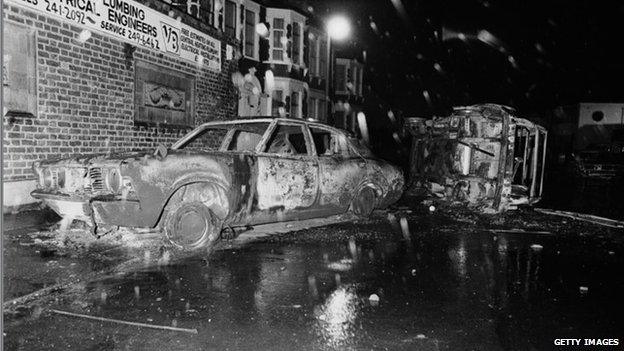
About 500 police battled with rampaging youths who threw bricks and bottles from walkways in the estate
PC Keith Blakelock was stabbed to death in the Broadwater Farm riot in Tottenham, north London, on 6 October 1985. But what caused the riots?
Broadwater Farm
Built in 1967, Broadwater Farm Estate contained more than 1,000 flats, housing more than 3,000 people.
It deteriorated into a crime zone with police no-go areas and poor investment. But by early 1985, a series of initiatives had started to improve the estate's reputation.
Even Princess Diana paid a visit, which she did to the delight of most of the families on the estate, in February of that year.
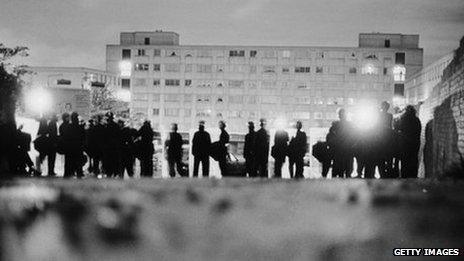
Broadwater Farm Estate deteriorated into a crime zone in the 1980s

Brixton riot
The Tottenham riots came just a week after riots in Brixton, south London, which happened following the accidental shooting of Cherry Groce.
She was left paralysed from the waist down when she was shot by police looking for her son in connection with a robbery.
In the Brixton riot, 50 people were injured and there were more than 200 arrests.
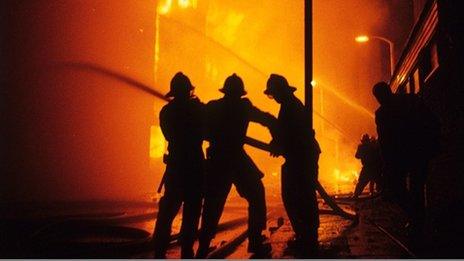
The Brixton riots were sparked by the shooting of Cherry Groce

Death of Cynthia Jarrett
Broadwater Farm resident Cynthia Jarrett died of heart failure after four policemen burst into her home during a raid on 5 October 1985.
Police said they were looking for stolen property; they found none, but Mrs Jarrett's death sent shockwaves through Tottenham's West Indian community.
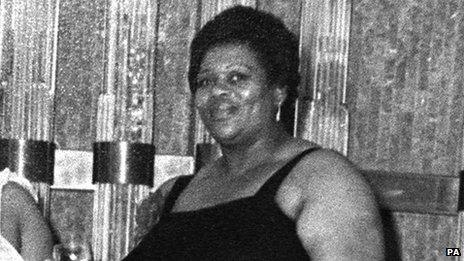
Cynthia Jarrett died while police officers searched her home in Tottenham

Night of the riot
In the daytime on 6 October 1985, Mrs Jarrett's family met the police to discuss her death and demanded an inquiry. They made it clear they did not want any kind of public disorder.
Britain's first black council leader, Haringey's Bernie Grant, issued a statement condemning the police for the way they searched Mrs Jarrett's house.
The trouble began at 18:45 GMT when police were called to Mount Pleasant, Willan Road and The Avenue.
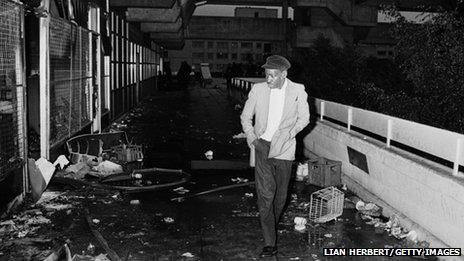
Bricks, bottles and cans from walkways within the estate
They were pelted with bottles and petrol bombs, cars were overturned and set alight as were shops and other buildings. There was widespread looting.
About 500 police with shields, helmets and truncheons battled with rampaging youths who threw bricks, bottles and cans from walkways within the estate as fires turned the night sky red.
By midnight 58 policemen and 24 other people had been taken to hospital.
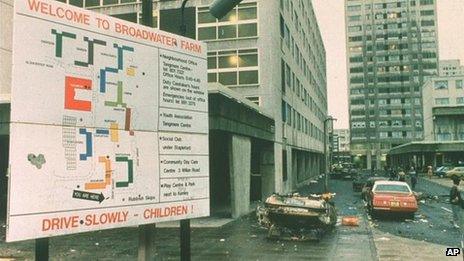
By midnight 58 policemen and 24 other people had been taken to hospital.

Death of PC Blakelock
At around 21:45 several gunshots were heard and one officer was shot and seriously wounded in Griffin Road.
Half an hour later, PC Keith Blakelock was stabbed in the neck, suffering serious injuries. He died later in hospital.
Ten minutes after the stabbing another officer was shot and slightly wounded.
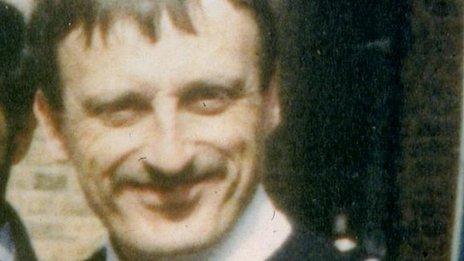
Pc Blakelock was stabbed to death

- Published3 March 2014
- Published26 July 2013